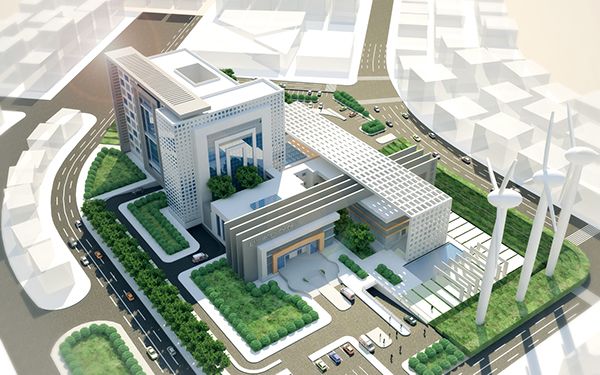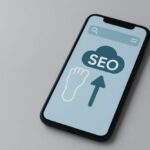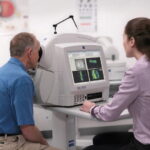Balancing security and access in any property is always a fine line to tread. However, healthcare facilities have unique challenges that make balancing these twin demands much more difficult.
First and foremost, there is the security of patients, visitors and staff to consider. Then there are the physical assets that need to be protected. Additionally, all this needs to be done in an often hectic environment with multiple public access entry points that remain open 24/7.
In this guide, we look at these challenges and the groundbreaking solutions that are helping healthcare facilities balance access and security.
Unique Security Challenges in Healthcare
Integrating security into healthcare construction is far from straightforward. These projects are complex, with specific challenges that require careful consideration, including security.
We consider the solutions that can address the security challenges a little later. However, a critical first step is always to “grasp the complexities.” Below we look at some of the main “security v. access” challenges in healthcare facility design:
– 24/7 operations: Healthcare facilities operate around the clock, necessitating constant security vigilance.
– Multiple access points: With various entry and exit points for patients, staff, and visitors, controlling access is a significant challenge.
– Public accessibility: As public spaces, hospitals must balance being welcoming while safeguarding against potential threats.
– Protection of sensitive areas: Areas like pharmacies, records rooms, and intensive care units require heightened security measures.
– Safety of patients, staff, and visitors: Ensuring the physical safety of everyone on the premises is paramount.
– Asset protection: Healthcare facilities house expensive equipment and medications that need safeguarding from theft or misuse.
– Data security: With vast amounts of sensitive patient data, cybersecurity is a critical aspect of overall security.
The mix of vulnerable patients, threats of violence, drug and equipment theft, and an open-door policy make securing healthcare facilities a challenging task. But not, as we discuss next, an impossible one.
Comprehensive Security Measures for Healthcare Facilities
The complexities of balancing security and access is only part of the story. The clinic atmosphere and design also matters to patients and effective solutions must offer security while maintaining a comfortable, secure, and welcoming environment.
Let’s look at some of the advanced (and traditional) solutions enabling this:
Camera Surveillance Systems
Cutting-edge camera surveillance in healthcare security systems fit into both the advanced and traditional categories. These have played a major role in healthcare facilities for decades. However, modern systems offer the usual blend of deterrence and detection but also add other key benefits, including:
– Real-time monitoring: Gone are the days of grainy black-and-white footage, Modern systems enable continuous observation of critical areas in full HD.
– Advanced AI analytics: AI-driven analytics can identify unusual patterns or behaviors, aiding in preemptive security measures.
– Evidence collection: Provides valuable footage that can be used for investigations and legal proceedings.
– Remote accessibility: Allows security personnel to monitor multiple locations simultaneously from a central point.
Robust security for healthcare begins with a knowledge of what is going on. Advanced surveillance systems are the backbone that provides this.
Advanced Access Control Systems
Access control is one of the most fundamental challenges for healthcare facilities. It is here where the real “access v. security?” question truly comes to the foreground. Just how do you regulate and restrict access to healthcare facilities, while balancing the two demands?
Modern access control systems are opening all the right doors to enable this:
– Customizable access: Tailor access permissions for different staff levels, areas, and times.
– Integration with other systems: Seamlessly works with surveillance and alarm systems for comprehensive security.
– Visitor management: Efficiently tracks and manages visitor access, enhancing overall security.
– Audit trails: Provides a record of who accessed which areas and when – crucial for investigations.
These systems are changing the meaning of “keeping it under lock and key” offering sophisticated solutions that ensure security without compromising the accessibility essential in healthcare settings.
Integrated Emergency Response Systems
Integrated emergency response systems are crucial in healthcare facilities striking a balance between unrestricted access and robust security. These systems ensure swift and coordinated responses during emergencies.
Implementing such systems offers immediate benefits that include:
– Rapid response coordination: Enables quick mobilization of emergency protocols, ensuring immediate action.
– Integration with security infrastructure: Works in tandem with surveillance and access control systems for a cohesive security approach.
– Clear communication channels: Facilitates effective communication among staff, security, and emergency responders.
– Automated alerts and lockdowns: Again, this can be integrated with access control and surveillance systems to automatically initiate lockdowns or alerts in response to identified threats.
These integrated systems demonstrate how healthcare facilities can maintain open access while being fully prepared for any security emergencies, ensuring both safety and accessibility.
Health and Safety: Harmonizing Access and Security in Healthcare
The unique demands of allowing access without compromising security in healthcare facilities might, at first glance, seem like an impossible ask. How can you operate an open-door policy and maintain security?
The answer lies not with one magic solution, rather it is a blend of integrated technologies where the whole is greater than the sum of its parts. By leveraging such an approach, it is possible for healthcare facilities to maintain an open-access, welcoming, and – above all – secure environment.
Read Also
- How to Drive Growth Through Customer Centricity in HealthcareThe world of healthcare is changing in big ways. Consumers are now stepping up and taking charge of their health journeys. This change is happening now for important reasons. The U.S. health and wellness market is huge, projected to be over $6 trillion in 2025. This growth is fueled by rising out-of-pocket costs and more… Read more: How to Drive Growth Through Customer Centricity in Healthcare
- Maximizing Digital Reach for Podiatry Clinics in Local HealthcareMaximizing Digital Reach for Podiatry Clinics in Local Healthcare As the healthcare industry evolves, mobile marketing becomes indispensable for practitioners. Podiatry clinics, focusing on foot and ankle care, must adapt to digital strategies to engage patients effectively. Implementing tailored SEO practices is crucial for these clinics to thrive in an increasingly competitive market. Digital marketing… Read more: Maximizing Digital Reach for Podiatry Clinics in Local Healthcare
- Leveraging Virtual Medical Assistants to Maximize Operational Efficiency in HealthcareIn the increasingly complex and fast-paced world of healthcare, operational efficiency is critical. Doctors and healthcare administrators are faced with numerous challenges, from managing patient scheduling and medical billing to adhering to stringent regulatory compliance and insurance claims processing. These tasks, while essential, often divert time and resources away from the core mission of providing… Read more: Leveraging Virtual Medical Assistants to Maximize Operational Efficiency in Healthcare
- Optimizing CT Protocols: The Hidden Key to Efficiency and Cost Savings in RadiologyIntroduction: Why CT Protocol Optimization Matters Computed Tomography (CT) is a cornerstone of modern diagnostic imaging, providing critical information across nearly every medical specialty. However, maximizing the value of CT — both clinically and financially — requires more than just advanced hardware. The real secret lies in the optimization of CT protocols. When CT protocols… Read more: Optimizing CT Protocols: The Hidden Key to Efficiency and Cost Savings in Radiology
- Hospital Discharge Accuracy Improves With Daily Advisor InvolvementThe hospital discharge process has a big effect on patient recovery, hospital efficiency, and finances. It requires careful planning and clear communication between team members to make sure patients get the right care when they leave the hospital. Having physician advisors involved at this stage can improve the discharge process by spotting problems that need… Read more: Hospital Discharge Accuracy Improves With Daily Advisor Involvement
- Understanding Clinical Trials: What to Learn and the RoadblocksClinical trials are research studies conducted to determine the efficacy of medical, surgical or behavioral interventions. They are the most commonly used way that researchers assess whether new treatments, drugs or medical devices are safe and effective for use in humans. There are strict protocols governing these studies, and all of this is done in such a… Read more: Understanding Clinical Trials: What to Learn and the Roadblocks
- The Patient’s Voice: 7 Ways to Improve TelehealthTelehealth has transformed how we access healthcare, making it more convenient and accessible than ever before. However, as this technology evolves, so does the need for improvement. Patient feedback is essential in shaping these telehealth experiences. It offers valuable insights into what works, what doesn’t, and how we can make virtual care even better. Currently,… Read more: The Patient’s Voice: 7 Ways to Improve Telehealth
- The Role of Carbide Burs in Modern Dental ProceduresAs a result of this procedures need to be well coordinated and to this end, precision tools are used by dental practitioners. Among the most essential tools in a dentist’s arsenal are carbide burs, which have revolutionized various aspects of dental work. Today’s dentistry cannot work without these tools as they are both strong, sharp,… Read more: The Role of Carbide Burs in Modern Dental Procedures
- Detection of Diabetic Retinopathy: The AI AdvantageDiabetic retinopathy (DR) is a leading cause of blindness among working-age adults, affecting millions worldwide. The prevalence of DR is alarmingly high, affecting an estimated 34.6 million people globally. In the United States alone, it is estimated that 7.7 million adults have some form of diabetic retinopathy. How Does Diabetes Affect the Eye? Most of… Read more: Detection of Diabetic Retinopathy: The AI Advantage










